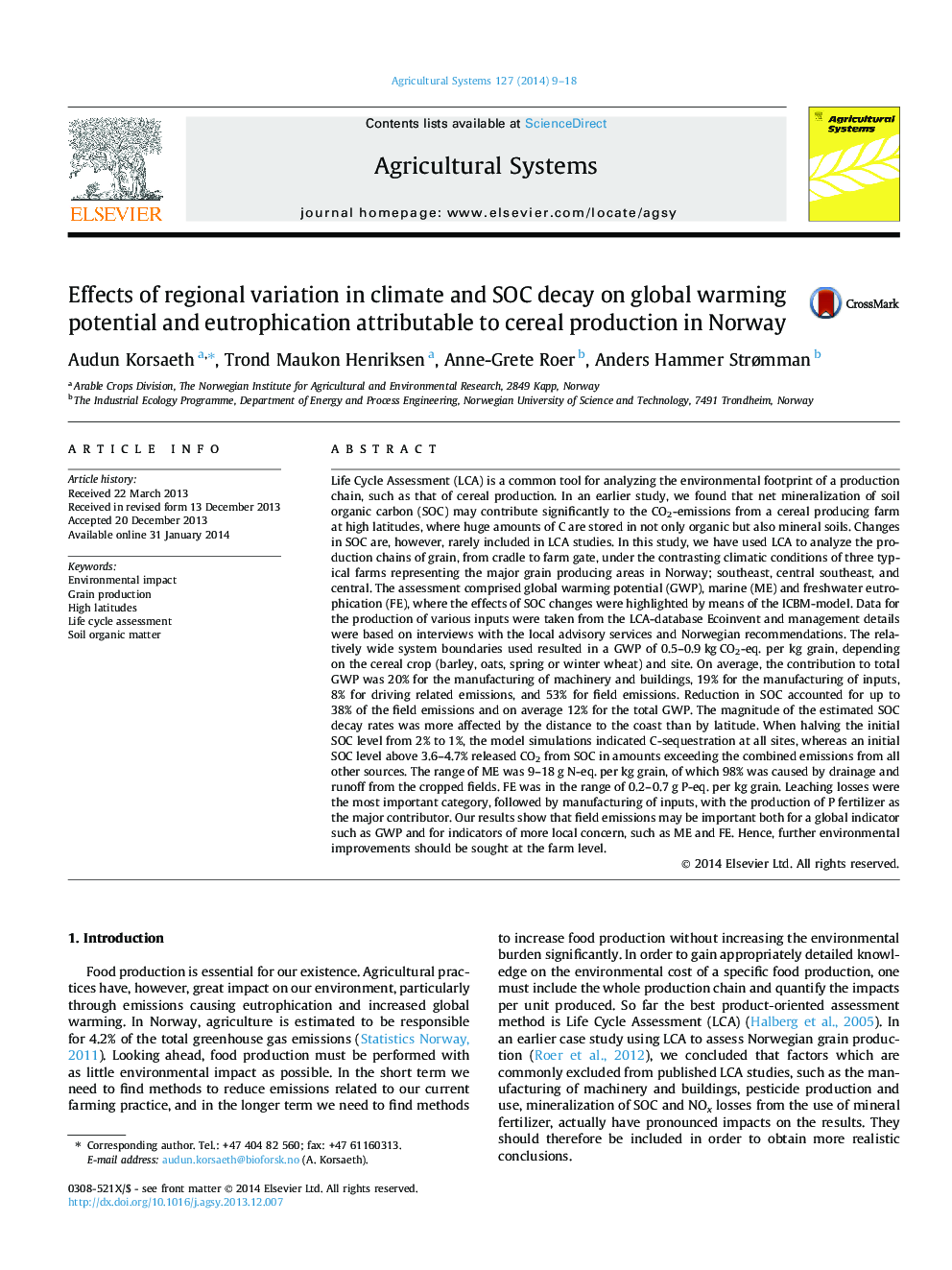| Article ID | Journal | Published Year | Pages | File Type |
|---|---|---|---|---|
| 6368652 | Agricultural Systems | 2014 | 10 Pages |
Abstract
Life Cycle Assessment (LCA) is a common tool for analyzing the environmental footprint of a production chain, such as that of cereal production. In an earlier study, we found that net mineralization of soil organic carbon (SOC) may contribute significantly to the CO2-emissions from a cereal producing farm at high latitudes, where huge amounts of C are stored in not only organic but also mineral soils. Changes in SOC are, however, rarely included in LCA studies. In this study, we have used LCA to analyze the production chains of grain, from cradle to farm gate, under the contrasting climatic conditions of three typical farms representing the major grain producing areas in Norway; southeast, central southeast, and central. The assessment comprised global warming potential (GWP), marine (ME) and freshwater eutrophication (FE), where the effects of SOC changes were highlighted by means of the ICBM-model. Data for the production of various inputs were taken from the LCA-database Ecoinvent and management details were based on interviews with the local advisory services and Norwegian recommendations. The relatively wide system boundaries used resulted in a GWP of 0.5-0.9 kg CO2-eq. per kg grain, depending on the cereal crop (barley, oats, spring or winter wheat) and site. On average, the contribution to total GWP was 20% for the manufacturing of machinery and buildings, 19% for the manufacturing of inputs, 8% for driving related emissions, and 53% for field emissions. Reduction in SOC accounted for up to 38% of the field emissions and on average 12% for the total GWP. The magnitude of the estimated SOC decay rates was more affected by the distance to the coast than by latitude. When halving the initial SOC level from 2% to 1%, the model simulations indicated C-sequestration at all sites, whereas an initial SOC level above 3.6-4.7% released CO2 from SOC in amounts exceeding the combined emissions from all other sources. The range of ME was 9-18 g N-eq. per kg grain, of which 98% was caused by drainage and runoff from the cropped fields. FE was in the range of 0.2-0.7 g P-eq. per kg grain. Leaching losses were the most important category, followed by manufacturing of inputs, with the production of P fertilizer as the major contributor. Our results show that field emissions may be important both for a global indicator such as GWP and for indicators of more local concern, such as ME and FE. Hence, further environmental improvements should be sought at the farm level.
Related Topics
Life Sciences
Agricultural and Biological Sciences
Agricultural and Biological Sciences (General)
Authors
Audun Korsaeth, Trond Maukon Henriksen, Anne-Grete Roer, Anders Hammer Strømman,
